The Best Tire Chains for Serious Winter Driving

The steady improvement in tire technology has led to snow tires that will help you get through just about any winter conditions. However, for the worst snowy conditions, especially when there is lots of smooth ice, no tire performs as well as a good set of tire chains.
Tire chains were first introduced in 1904, when drivers of early automobiles were forced to fight snow and ice with narrow, slick tires. Back then, chains were the only viable option, but the old school chain systems were problematic. They were hard to install on the fly and they could come loose, damaging the vehicle when they flopped around. Many early tire chain systems were also fairly crude, so they could often damage the surface of the wheel face.
As time went on and tire technology improved, tire chains became more popular with commercial truck drivers who couldn’t easily switch tires when they got into the winter months. Although snow tires for passenger vehicles are vastly better than they were, they still don’t offer the traction advantages of chains, especially in deep snow and on ice. Fortunately, tire chain systems have improved recently, as well, including the development of modern systems that don’t use chains at all. They have become easier to install and easier to tighten, making them more reliable and less likely to damage the vehicle or the wheels.
We have seen a lot of nearly identical, low-priced products, often made with plastic plates, and a lot of gimmicky show traction devices. We do not recommend any of them. There is no substitute for something that wraps around your tire, preferably made of metal. Peerless, which also makes the Security brand, has most of the market, and you won’t go wrong with any of their snow chains. We also do not recommend any style of chain which requires strapping it through the spokes of a wheel. This is hard to do and can easily damage your wheel’s finish. It can be impossible to do at all with many styles of wheel.
There many not be many different brands of tire chains, but there are a lot of different styles, so for more information on the best tire chains, refer to our table of contents.
Table of contents
- 1. Editor's Pick: Peerless Auto-Trac Self-Tightening Traction Chain
- 2. Best For Big Wheels and Tires: König XG-12 PRO
- 3. Security Chain Super Z6 Cable Tire Chain
- 4. AutoSock Tire Chain Alternative
- 5. Glacier 1022 Passenger Cable Tire Chain
- 6. Matte Super-X Snow Socks
- Tire Chains: Everything You Need to Know
- What Types of Tire Chains Are There?
- What To Expect When Driving With Tire Chains
- When Should I Use Tire Chains?
- What Do I Need to Put On Tire Chains?
- Recent Updates:
1. Editor's Pick: Peerless Auto-Trac Self-Tightening Traction Chain
You could say that Peerless is the original tire chain company. They purchased American Chain and Cable Co. (ACCO) in 2006; and Harry D. Weed, inventor of the tire chain, sold his Weed Chain Tire Grip Company to ACCO back in 1912. So with 115 years in the business, literally no company has more experience making tire chains than Peerless.
The Peerless Auto-Trac tire chain is the most advanced iteration of the classic, wrap-around-the-tire style. The tread and sidewalls are wrapped in a diamond-shaped pattern of thick chain. Where this weave of chain wraps onto the sidewalls, there is a chain running around the face of the tire, holding all of the main traction chains against the rubber.
The chain on the inside of the tire clips to itself to complete the circuit. On the outside of the tire, the chain system is secured by means of the unique ratcheting auto-tensioner. This tensioner system tightens and centers the chain system on the tire, so you don’t need to stop to make sure that the chain is tight. That snug fit helps the Auto-Trac meet Class S clearance requirements for vehicles with limited room in the wheel openings.
This self-tightening tensioner system is what allows these snow chains for your car to stand ahead of the competition, with easier attachment and a self-centering, self-tightening funcion. The Auto-Trac tire chains for snow offer great grip with plenty of thick chain straddling the rubber tread. The downside is that all of that chain is they weight about five pounds a set, more importantly, with these as with most traditional tire chains, you have to stay under 30 MPH.
Pros | Easy to install and remove, self-tightening and centering, best tire coverage and grip available |
Cons | Size specific so will not work on multiple vehicles with different sized wheels |
2. Best For Big Wheels and Tires: König XG-12 PRO
König's industrial looking XG-12 PRO snow chains are designed for SUVs with wheels up to 21 inches and tight wheel wells. Requiring less than a half inch (12mm) of clearance, they're sized for trucks, SUVs, vans, commercial vehicles, and RVs that other chains won't fit.
After you get them on using a micro-adjustment system, the König ATC device (Active Tensioning and Balancing) automatically tightens and centers the chains as you drive. Attaching them is easier than some other styles of chains, because you don't need to move your vehicle; instead, the chains slide into position around the ring. All parts of the chains that could potentially getting wheel are made with an anti-scratch composite material, and the side elements are protected with specific nylon bumper kit.
The XG-12 PRO tire chains have a great 90% positive rating from over 400 reviews, and the company has a B satisfaction grade.
König is based in Italy and is part of parent company Thule, well known for roof racks and other accessories. They have been in business since 1966. There's a good five-year warranty on the XG-12 PRO snow chains, but customer service is only available through a form on their website. There's no chat or North American phone number, and their email, info@konigchain.com, is buried in a warranty document.
Pros | Self centering, excellent traction, five year warranty |
Cons | Expensive, especially in larger sizes, you have to drive before they get centered |
3. Security Chain Super Z6 Cable Tire Chain
Security Chain is one of Peerless' many brands of tire chain, and is made to their usual high standards. The Super Z6 cable-style tire chain from Security Chain offers self-tensioning with a finer chain that weighs less than traditional link chains. The Z6 uses a system of cables wrapped in fine steel coils, which dig into snow and ice like thousands of little fingers. This type of traction material is lighter than the heavy duty chains, but it also takes less space to install, making this ideal for compact vehicles with small wheel openings. The coils don't dig as deep as links of chain, but they create a coarser tool to tear up the slick surface.
Super Z6 tire chains install easily. You drape them around the inside of the tire and stretch the cross-section portions over the rubber tread. You then connect the coupler to complete the circuit on the face of the tire. The unique component of the Super Z6 comes next, in the form of the rubber tensioner that connects to the cable running around the circumference of the tire. Using six clips, the tensioner pulls in on the connecting cable, helping to keep the tire chain system tight on the tire.
This constant-tension system eliminates the need to stop and check the tire chains, but they also make it easier to mount the chain on the tire. Since the tensioning system tightens and centers the chain system, you don’t need to move the vehicle when installing the chains. If there is an odd gap where the tire is on the ground, the tensioner system will pull that into shape as soon as the vehicle drives away.
Pros | Easy to install without moving the vehicle, constant spring tension prevents the need to retighten, unique spring-style design yields better traction than traditional chains |
Cons | Expensive, metal components may contact and scratch wheels, size specific so will not work on multiple vehicles with different size wheels |
4. AutoSock Tire Chain Alternative
With a name like AutoSock, it doesn't take much imagination to picture how the product works. Instead of clamping chains or cables to your tire, an AutoSock is a big elastic bag you stick over your tire. After getting as much of it on as possible, you have to roll forward or back slightly to get the other side on. There's nothing to tighten, the straps just help keep it on the tire when you're moving, and help you remove it. Some tire chain designs let you install them without moving the car.
The big advantages of them are that the fabric construction won't damage either your wheels, or your wheel wells, if they come in contact with paint. Weighing under one pound each, they're a fraction of the weight of any chains, and they store in a very convenient little package that you can keep in your car year-round, so you never forget them. They tend to go on much faster and easier than chains, and are extremely simple to remove. They're approved by the manufacturer for many cars, so you don't have to worry about your car's warranty.
Because of the way they fit, you have to know your tire size and choose from between 82 different sizes. They're also available for RVs and larger commercial vehicles.
So why isn't everyone using them? Unlike a tire chain, the only thing holding AutoSocks on is an elastic band, and you have to stay under 20 MPH. They can also come off if you spin your tires. The fabric does a great job gripping on snow and ice, but can't hold up if you hit a hard surface, like pavement or gravel, and will quickly fall apart. We recommend AutoSocks as an emergency device, to get you out of a jam, which they will do wonderfully. If you need chains regularly, they're not going to hold up for long-term use.
AutoSock is a Norwegian company with a US distributor in Colorado that has a toll-free customer service number and email. We called them to ask about a warranty, and they told us not very helpfully that they'll replace them if there's a defect in materials, "but it depends on how you use them." The product has a good 84% positive rating, but the company has a C rating, influenced heavily by the lack of a warranty, and difficult return policy.
Pros | Lightweight and space saving, won't damage wheels or bodywork |
Cons | Have to move the car to get them on, very low speed operation only, short lifespan |
5. Glacier 1022 Passenger Cable Tire Chain
These are your basic ladder-style cable tire chains, made of steel cable with stamped-on rollers, and a torsion connection device. There's nothing sophisticated about them, and you'll almost certainly want spider-style tensioners to hold them in place, but they're not expensive and they can will you out of a jam.
Don't get the Glacier tire chains for snow confused with a Peerless or König. They're not easy to put on and you're not going to drive around with them on all winter without them falling apart. But you're also going to pay $250 or more for a set. At less than half the price of a premium set of car chains (or in the case of the König, one-third), if you're getting tire chains for an emergency you might or might not ever have, they might be just right for you.
Pros | Very low profile, only approved chain for certain makes, light, inexpensive and small |
Cons | Hard to put on, needs separate tensioner for best performance, questionable durability |
6. Matte Super-X Snow Socks
Matte's version of a snow sock is a little more versatile than some other snow socks, with a more forgiving elastic that means there are only a few different sizes that cover a range of tires. Like all snow socks, they're extremely easy to install, although you do have to roll your vehicle forward and back. Snow socks also tend to be self-centering. They do not do well at higher speeds, but they won't damage your wheels or car in installation or during use.
The Super-X is a mid-range snow sock, and is made with very thick material that should last longer than other brands. It should not be used on anything other than snow, since a hard surface or gravel will chew through it fast. Snow socks are widely legal in places that tire chains are not, making them a compelling choice for people who don't expect to use them much. They are very light and easy to store, and machine washable, which will extend their lifespan by getting salt and abrasive grit out of the fibers.
Matte's customer service is based at it's headquarters in Istanbul, and we're not sure what you'd get if you called the Turkish phone number (you're calling about their kar çorabı, if that helps). We would recommend using email support, if needed. There aren't many reviews of Super-X Snow Socks yet, which have a 67% positive rating. Reseller K&K Auto Accessories has a good B rating.
Pros | Easy installation and sizing, more durable than other snow socks |
Cons | Unknown warranty, no North American customer service |
Tire Chains: Everything You Need to Know
Photo credit: Jaroslav Moravcik / Shutterstock.com
The first tire chains were literally just random chains and even ropes that people wrapped around their tires to get grip on icy roads. The first commercially manufactured chains were designed specifically to fit around the wheel-and-tire and today’s tire chains are evolutionary forms of the original design.
Today’s traditional tire chains are often comprised of a similar length of chain like you might use to hoist an engine or provide a safer connection between a truck and trailer. They have two chains that run around the inner and outer sidewalls, with an array of short sections that run across the tread of the tire. The chain creates a web of sorts that wraps the majority of the tire in the thick chain.
Tire chains work by gripping the snow or ice more aggressively than any snow tire. When the chains are pressed between the rubber of the tires and the driving surface, they dig into the ice and help the vehicle move forward. When it comes to deeper snow, the portions of the chain on the sidewalls can also help you dig through winter’s fury. Ultimately, the chains dig through pretty much anything and with enough digging comes useful traction.
The key issue with the old school chains is that they can be heavy, so the modern tire chain systems look to provide similar functionality with different materials. Some brands use a finer spring-style chain that will dig in, but they weigh less than the heavy duty chains. These tire chain systems that wrap around the perimeter of the wheel-and-tire assembly offer the best overall coverage, with chain digging into the surface every few inches, all of the way around the tire.
What Types of Tire Chains Are There?
Some products are more like snow shoes that strap around the wheel and tire. These typically have three units that connect to each tire, with straps running through the wheel. Some options of this style use actual chains, while others use composite panels with studs mounted across the face. This style is generally easier to attach and tighten while being lighter than a traditional system, but with the straps going through the wheels, there is potential for debris to get caught against the wheel. That would lead to scratching, for those adding chains over nicer looking wheels.
If you are shopping for tire chains and you want the greatest level of grip, a traditional system with thick metal chains wrapped around the tire is the best way to go. These are heavy, but with the higher end versions, self-tightening systems help to prevent the chains from coming loose. They cost more than a basic chain setup that you have to retighten, but the biggest issue with the heavy duty chains is weight.
On the other hand, if you want a tire chain system that is lighter, easier to transport, and easier to stow in your vehicle, you should consider the three-piece systems with studded, composite shoes that strap around the wheel-and-tire. These more modern systems are more user-friendly, but they don’t offer quite the same level of traction as chains that wrap around the entire tire.
What To Expect When Driving With Tire Chains
Photo Credit: Wisconsin Department of Transportation
No matter what kind of tire chains you use, it's not going to be a quiet ride. Noise and vibrations you can feel through the wheel (and the seat of your pants) are normal, especially as you approach the 25 or 30 MPH top speed of your set of tire chains. Your steering may feel weird and heavy, or steering effort may not be consistent as you turn the wheel—it might be easy and normal at first, then hit a spot where the chains bite and it gets harder to turn your wheel.
If you have a vibration that makes the wheel shake in your hands, stop and check your tire chains, if possible. Getting snow and ice packed into them is normal and unbalances your wheels. If that's the case, you can try to kick it loose, or just drop your speed. But it could also mean your car chains are loose or not centered. This can damage your car's body, or they could come off.
When Should I Use Tire Chains?
Tire chains for snow are not something you drive around with all winter (unless maybe you live in Inuvik). But if you wait too long to put your car chains on, it may be too late.
The first thing you want to do is check for local weather alerts, and in some areas, mandatory chain-up orders. If you are planning on heading into hills or mountains when it's already snowing, or raining in the 30-40°F (0-5°C) range, you should be ready to put your chains on as soon as conditions change; or when you have a good area to do so. The last thing you want to be doing is trying to get them on when you've started to spin out, and are crouched on the side of the road in six inches of slush. Remember: The rule of thumbs is that temperature drops drops 3-5º F for every 1000 feet (0.5°C per 100 meters) of elevation gain, so just a few minutes of driving can take you from rain into heavy snow or ice.
What Do I Need to Put On Tire Chains?
The very first thing you want to do when you get snow chains for your car is practice, preferably somewhere warm and dry. We can tell you from frustrating experience that even the best tire chains can be confusing to put on the first time, but with a little experience, what might take you 10 minutes a tire will soon only be a minute or two. Watching a YouTube video for your specific brand of chains will be a big help.
If you live somewhere you need to carry tire chains, you should already have a good winter emergency kit in your vehicle. You'll want to add a few things to it to make putting on tire chains for snow as easy (and fast) as possible:
Warm, waterproof gloves. You'll be handling cold metal in subfreezing temperatures.
A kneeling pad. A cheap yoga pad or camping mat is perfect. It gets cold, fast, if you have to lie down in the snow.
A foldable steel emergency shovel. If you're lucky, you'll be putting your snow chains on at a chain-up area or pull-off; if you're not, you'll have to dig out around your tires to get the chains on.
Recent Updates:
January 27, 2022: Removed unavailable Suptempo and Niceasy brands, added AutoSock and Matte.
January 25, 2022: Replaced König K-Summit with König KXG-12 Pro due to shipping issues.
November 15, 2021: Expanded FAQ section. Added Glacier chains.
November 12, 2021: Removed discontinued Suptempo brand. Added König K-Summit. Updated information and links for 2021.
We are committed to finding, researching, and recommending the best products. We earn commissions from purchases you make using the retail links in our product reviews. Learn more about how this works.
Main photo credit: Sergey Novikov / Shutterstock.com

After completing a degree project in automotive design, Dave wrote and photographed for almost a decade in print car magazines (remember those?), before transitioning to digital. He now subjects a series of old high-performance cars to the roads and weather in Vermont and wonders why they're always expensively broken. Please stop when you see him crawling under one on the side of the road.
More by David Traver Adolphus







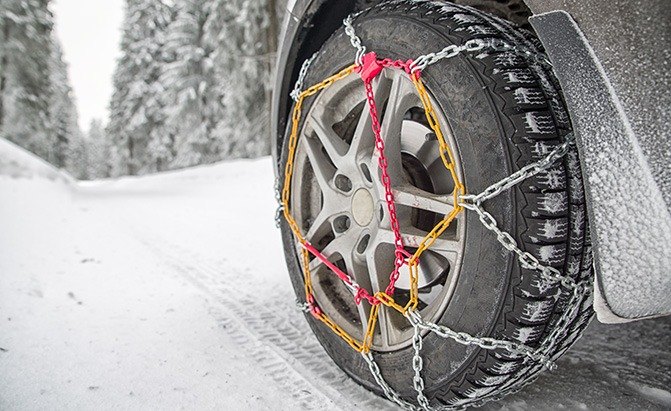














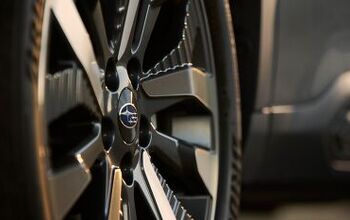
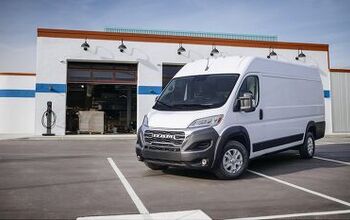

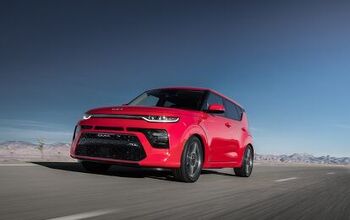



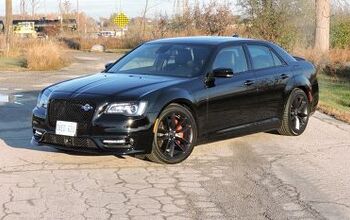





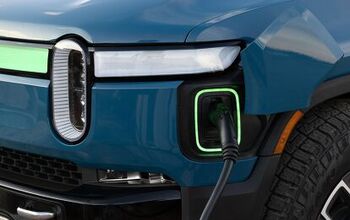
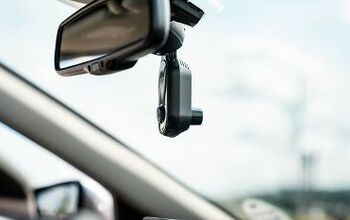
Comments
Join the conversation
Every article mainly talks about chains for ice and snow (read: winter). When I was working in the Oil and Gas industry, there was quite a few times where I had to chain up the service truck on wet clay roads (mainly in the spring). That stuff is as slippery as ice! Chains saved my bacon in those conditions.